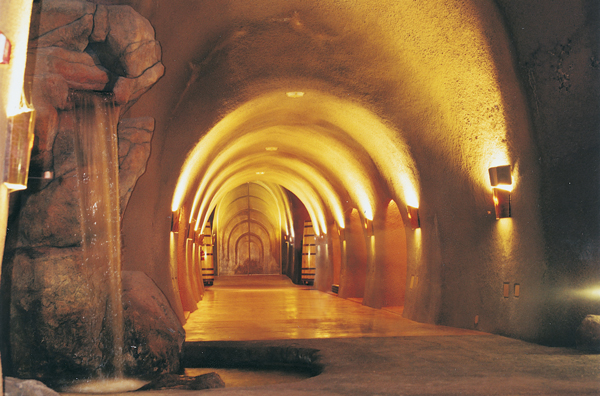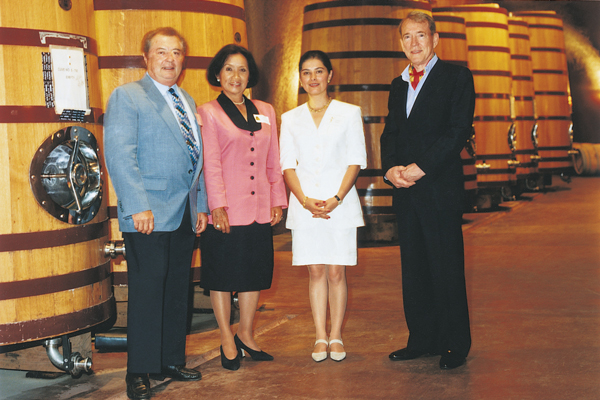The Jarvis winemaking facility is totally contained within 50,000 square feet of cave tunneled into the scenic Vacas Mountains, east of the town of Napa. It is said to be a visual masterpiece, and a technical masterpiece as well.
It has long been noted that due to invariant temperature and high humidity levels, many of the finest wines come from caves. Wineries have typically used caves just for the barrel aging of wines. They have seldom put the entire facility in a cave, due to the fact that typical cave tunnels are just not big enough for winery operations, particularly the fermentation tanks. Typically, tunneling machines produce tunnels 12 feet wide by 12 feet high. Tunneling techniques have advanced in the past 30 years in connection with the construction of larger tunnels for subways and other underground structures. My geotechnic consultant, Gregg Korbin used one of the largest computers at U.C. Berkeley to carefully model and design our large winery chambers. As the cave extends farther into the mountain, the chambers become larger, pushing the state of the art; one chamber is spacious enough to comfortably contain a basketball court. The large chambers in general allow even the tall fermentation tanks to be housed underground and out of sight, thus preserving the unmarred beauty of the natural environment.
Certain English mining machines, which happen to be very good at turning corners, were used to generate the very useful circular pattern of the winery. This circular design allows for a very efficient operation, and allows the winemaker and the lab to be no more than a few hundred feet from the farthest aging galleries.
Many features of the cave adhere to the architectural maxim, form follows function. For example, the stream and waterfall running through the center of the winery function to maintain the humidity level in the cave, accommodating the aging wines in barrels. The cascading water also has a calming effect on all who encounter it.
The underlying principle behind the Jarvis cave construction is that a parabolic shaped tunnel is inherently stable. Throughout the cave’s design you will find many arches, subtly echoing its parabolic structure. With the help of Jim Gangwer and many other area artisans, the cast bronze doors, brass wall sconces, arched alcoves, and fiber optic chandeliers, add to the mystique and beauty of the cave. All in all, it is a unique winery cave which not only produces ultra-premium wine, but which creates a beautiful atmosphere in which to enjoy the wine..

Home
| Grandfather | Father |
Myself | Main Index
![]()



